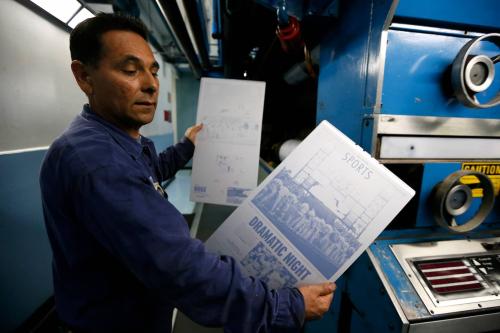The path toward sustainable journalism is being undermined by terrible data, argues Tom Rosenstiel in this paper which contends that the metrics used to understand publishing were designed for other purposes and offer little information that is useful to journalists or publishers. For instance, page views can tell a publisher how many times an individual piece of content was viewed, but not why it was viewed. Nor does a page view indicate whether consumers found that content valuable or an annoying waste of time they were teased into viewing.
For journalism to truly make use of the new world of metrics, says Rosenstiel, it first must learn how to turn bad data into good.
In this paper, Rosenstiel details one such effort to create new, more useful analytics—a project he piloted at the American Press Institute (API) in partnership with 55 publications. Rosenstiel and his team developed a new tagging system that allows publications to collect useful data by having editors tag stories by their true topic (not by dozens of tags meant to attract readers); by story type; and by a menu of other characteristics that might matter to them.
The tagging system has enabled publications to learn things about their output they didn’t know before, like how they approach each of their beats, and what their audiences do and do not respond to. The results vary by publication, but some findings have emerged that are common across outlets, such as:
- Major enterprise pays – The single biggest change publishers can make is to produce more major enterprise journalism. Major enterprise stories scored 48 percent better than others in a measure of overall engagement. However, just one percent of all content produced is classified as such.
- People like long stories – The conventional wisdom that writing for the web needs to be short and fast simply is not true. “Long form” stories, those averaging 1,200 words, drove 23 percent more engagement and lifted other metrics such as page views (up 11 percent), sharing (by 45 percent), and reading time (by 36 percent).
- The power of photos, audio, and video – Stories presented with a photo scored 19 percent higher in engagement than stories without photos. Stories with multiple photos scored 43 percent higher.
- Crime as a staple of local reporting – Across the data set, crime ranked with food and dining as the topics audiences engaged with most. But in a digital world, what works best is somewhat different than it may have been previously. For instance, crime briefs—the classic police blotter of small incidents—do not perform well online.
Making adjustments based on these and other findings has helped many API partners drastically improve reader engagement. By purposefully engaging with metrics, Rosenstiel concludes, any publication can become a master of, rather than a victim of, its data.




